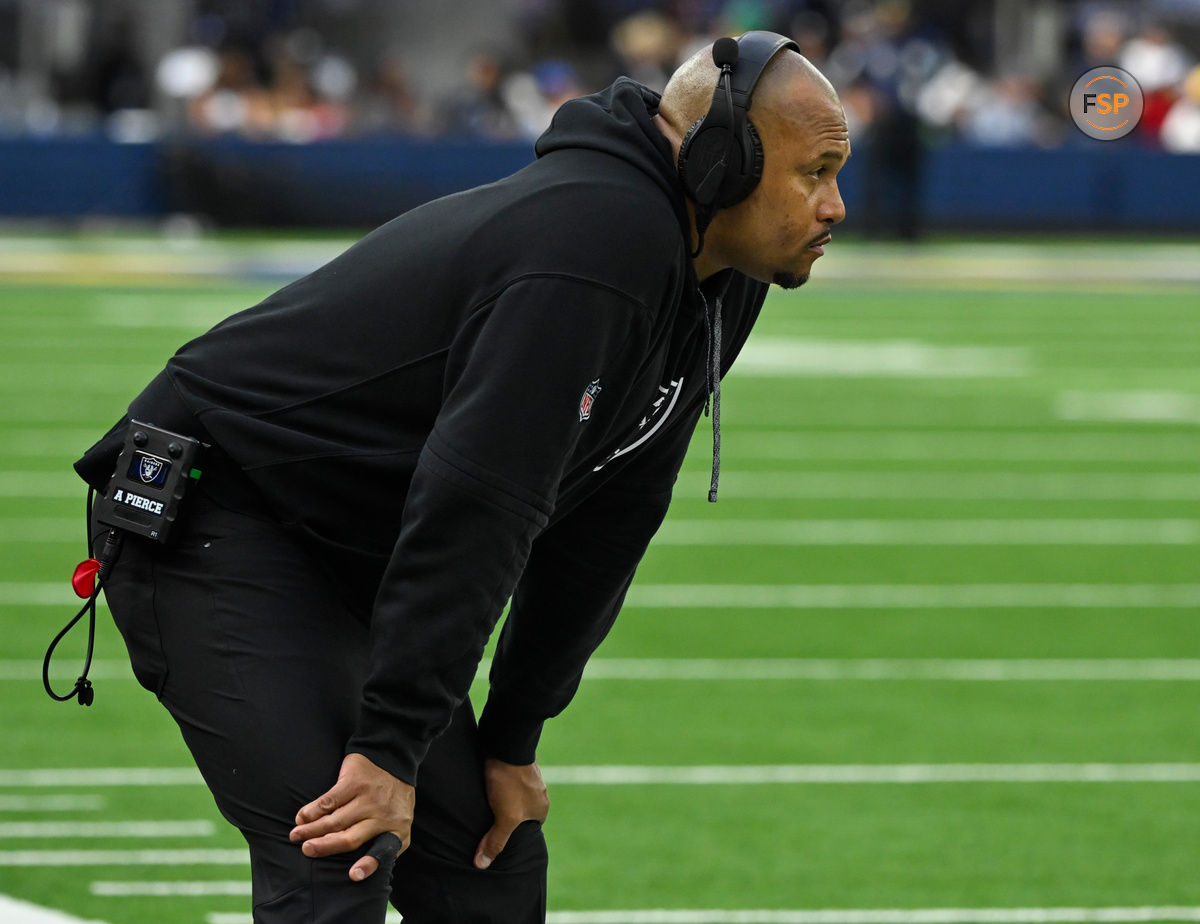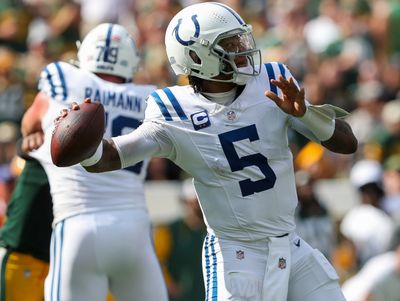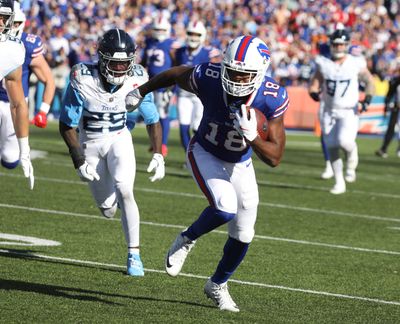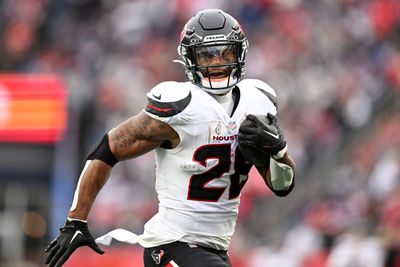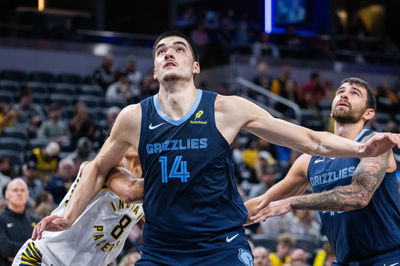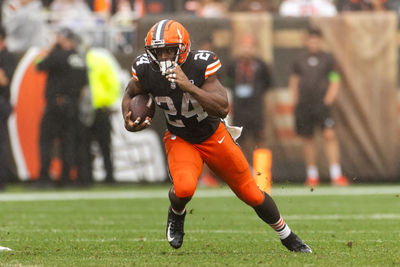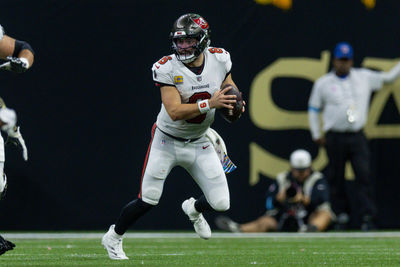How Antonio Pierce Held Back the Raiders in Week 7: Fourth-Down Decisions and Timeout Usage
The Las Vegas coach made one highly questionable decision and mishandled his timeouts at the end of Sunday's game.
Coaches don’t mean as much as players in any sport. Great coaching can enhance the talent of players at all levels, but no one wins without great athletes. Belichick had Brady; Bobby Cox was carried through the 90s by Greg Maddux, Tom Glavine, and John Smoltz. Where would Phil Jackson have gotten without MJ and Kobe?
Any professional head coach has a baseline of knowledge that puts them among the top 1% of people qualified for their position. They put in grueling hours every week to ensure their team has the best chance to win a meaningless mid-season game; coaches are over-prepared.
That’s why it’s so disappointing when a coach does something to actively lower his team’s chances of winning. In this case, I’m looking at Las Vegas coach Antonio Pierce and the way he handled the final three minutes of his team’s loss to the Rams on Sunday.
The Raiders kicked five field goals in a game they lost 20-15. There’s nothing inherently wrong with kicking five field goals; every situation is different. The final decision to kick rather than go for it cost the team the most dearly, but let’s quickly run through each time Vegas chose to kick a field goal leading up to that ultimate play.
Raiders Field Goals
14:04 in 2nd Quarter: 4th & 5 from Rams 20
This put the Raiders up 3-0. Each team had punted twice prior to this drive, so maybe Las Vegas was happy to strike first after a nine-play drive. More aggressive minds could make a good argument for going for it once they’ve hit the red zone, but this isn’t an egregiously bad decision.
End of 1st Half: 3 & 15 from Rams 29
Not much discussion here. This was the last play of the half, and the Raiders capitalized with three points.
2:25 in 3rd Quarter: 4th & 7 from Rams 20
Vegas hit the red zone again and settled for three points. In the six drives between the first field goal and this one, the Raiders went punt, interception, fumble returned for touchdown by LA, field goal, punt, and interception.
This kick made it 20-9. Given the first field goal, it’s not a surprise that Pierce choose to kick here in essentially the same situation but with more yards to gain. There’s value in cutting the score from 14 to 11, specifically staying within two scores if LA kicked another field goal. This is another defensible decision where aggressive coaches might consider going for it while down two touchdowns.
14:52 in 4th Quarter: 4th & 5 from Rams 9
Ugh. I get it: This field goal cut the deficit from 11 points to eight, making it a one-possession game (20-12). They were also inside the 10-yard line for the first time all day and knew they were going to need to score a touchdown eventually.
Even an incomplete pass would have started the Rams inside their own 10, setting up the Raiders with a chance to get the ball back in a good spot. Los Angeles drove down to the Raiders’ 16 on the ensuing drive only to miss a 35-yard field goal attempt; a relative chip shot would have put Vegas in the same spot they were before their own field goal with just 10 minutes to play.
2:46 of the 4th Quarter: 4th & Goal from Rams 9
This was the biggest mistake of the day. After the Rams missed their field goal, the Raiders went on a 15-play, 66-yard drive that took 7:25 off the clock. They were down 20-12; Las Vegas needed a touchdown at some point, the same as they needed a TD at some point when the whole fourth quarter was still remaining.
Now in a more desperate situation, Pierce again chose to be unaggressive and settled for three points. They had 4th & goal from the four-yard line before a false start pushed them to the nine. The offense was on the field initially, but Pierce sent out the field goal unit after the penalty.
If the Raiders go for it and don’t score a touchdown, the Rams would probably have started the final possession inside their own 10-yard line, same as the previous situation. This one is more egregious because Pierce’s team was going to be in the exact same situation after supposedly getting a stop and driving back down the field.
Which is more likely?
- The Raiders score on 4th & goal from the nine
- The Raiders kick a field goal, stop the Rams and get the ball back with around two minutes left, then drive 70-ish yards for a touchdown after it just took them over seven minutes to get inside the 10
They are going to need a stop either way, so why not start them inside the 10 rather than at the 30 after a touchback? The upside is that they would be driving for the win rather than the tie, but nothing about the Raiders on Sunday said they were about to drive down the field in under two minutes for a game winning touchdown.
Again: They kicked five field goals and didn’t get in the end zone all day. They chose to take three points twice in the fourth quarter while inside the 10-yard line, both times knowing they would need to score a touchdown eventually. It left the Raiders needing to drive nearly 90 yards with 1:39 remaining.
Vegas also could have had more time on their final possession if Pierce had handled his timeouts correctly. Every decision is independent of others throughout the game, but Pierce doubled down on hurting his team’s chances of winning.
Timeouts at the Two-Minute Warning
It’s always better for teams to take their timeouts before the two-minute warning if given the choice. Certain circumstances with down-and-distance and the time right around the two-minute mark can change the equation, but if a team can either take their three timeouts before the warning or let the warning go then take their TOs, it’s advantageous to stop the clock earlier.
It’s much easier with examples, and the end of this game provides the perfect example. A touchback after the final field goal gave the Rams the ball at their own 30-yard line with 2:46 remaining. When Kyren Williams ran for 14 yards on first down and the play ended after 2:40, and the Raiders let it run to the two-minute warning rather than using their first timeout.
The three plays after the warning took four, five, and five seconds, respectively, taking 14 seconds off the clock. The punt on fourth down lasted seven seconds. The Raiders started their final drive with 1:39 left.
Here’s how the clock would have looked at each play had the Raiders chosen to call timeout after Williams’ first down run; we’ll say the first timeout would have come at 2:38.
- 2:38 – one-yard Williams run, four seconds off the clock, second timeout Raiders
- 2:34 – three-yard Williams run, five seconds off the clock, third timeout Raiders
- 2:29 – five-yard Tutu Atwell reception, clock runs to the two-minute warning
The Los Angeles punt after the warning would have taken the clock to 1:53. They instead started at 1:39, so Pierce cost his team 14 seconds by waiting to call his timeouts. That might not seem like a lot but remember that Patrick Mahomes needed just 13 seconds to score against the Bills in the playoffs a few years back. At the very least, it would have cost the Raiders one play if they went on a long final drive.
Pierce isn’t out there crunching these numbers in his head in real time, but either he or someone on a headset who can help him should know that calling their timeouts before the two-minute warning is a better strategy. It didn’t matter in the end, as Gardner Minshew threw an interception on the third play of their final drive; regularly costing his offense more than 12% of their operating time, though, won’t turn Pierce or the Raiders into winners.
Conclusion
Pierce took over as interim coach last season with no previous head coaching experience, so he’s essentially a rookie. He will get better with decision making and managing the clock during games.
Hopefully, Vegas takes advantage of the learning opportunity and runs through these scenarios again with Pierce, allowing him to handle them differently in the future. Just like we’d look at a rookie quarterback who threw a costly interception late in the game and say, “He’ll learn from that mistake,” coaches go through the same growing pains.
This was a clear instance when the young coach hurt his team with his decisions, though, and it’s a good learning experience for both Pierce and anyone who enjoys football and wants to be more informed.
#2024-fantasy-football





























